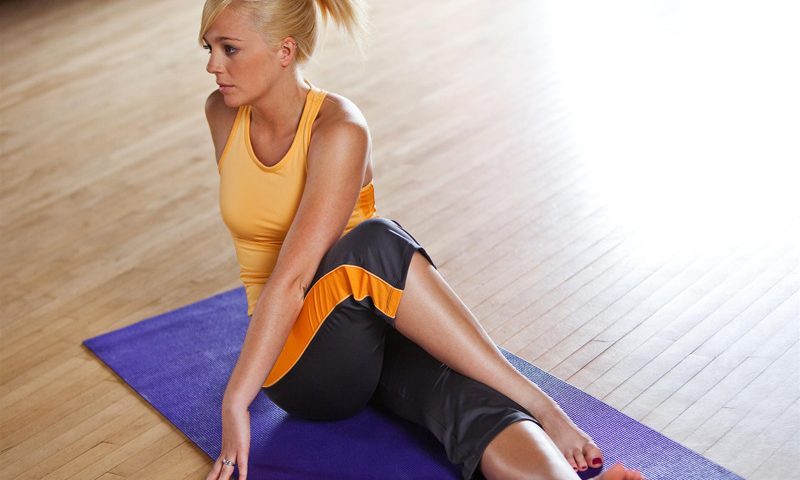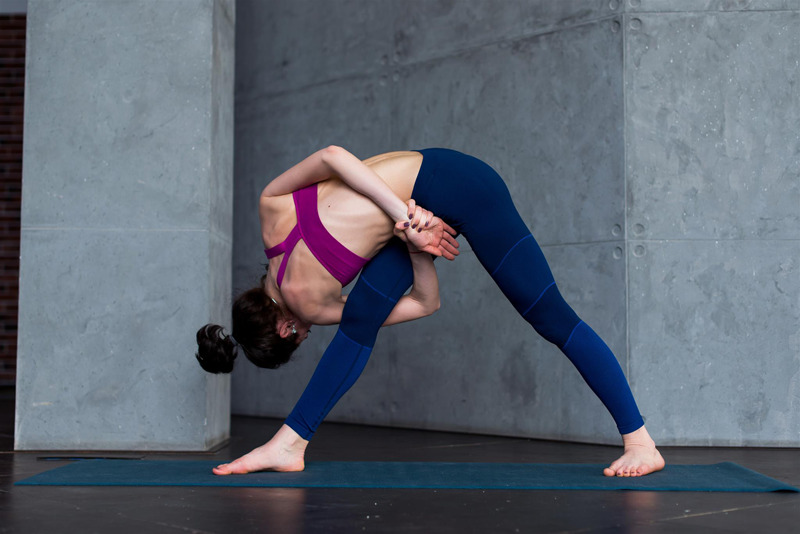
What is Yoga Sukha?
11th September 2018
Yoga Poses to Curb Hair Loss
14th September 2018Yoga for Your Upper Body

It’s well known that yoga can increase flexibility and provide relief from stiffness and tension. However, many people don’t realise that it can also be used to strengthen the body and build endurance in almost every muscle. Depending on the style of yoga you practice, you can increase strength through movement or by holding static asanas. In this article, we focus on the latter as we explore yoga for your upper body. Before you begin, it’s worth picking up some quality yoga clothes to practice in. As the evenings start to get cooler, many yogis choose to wrap up in some elasticated yoga sweatpants and a cosy jumper.
Downward Dog
One of the best poses for your upper body is Downward Dog. Not only does the asana strengthen the shoulders and arms, but it also stretches the calves, hamstrings, and arches. Additionally, the posture can boost your energy levels, relieve stress, and even improve digestion.
To practice the asana, stand straight with your feet shoulder-width apart. Next, hinge at the waist and lower your upper body towards the mat. Your body should now form a triangle as you anchor your hands and feet to the ground. If you’re a beginner, your hamstrings or shoulders may feel too tight for the pose. If this is the case, try bending your knees to make the asana easier. Spread your fingers for additional balance as you move your head in-between your upper arms. You are in Downward Dog. To increase the stretch, extend your tailbone up and back, remembering to breathe deeply throughout.
Plank Pose
Strengthening the arms, wrists, and back, Plank Pose is another great asana. The posture can also be used to tone the abdominal muscles for a flatter stomach.
To practice the asana, start by lying flat on your stomach. Tuck your toes under and place your hands directly beneath your shoulders. Keeping your body parallel to the floor, engage your abdominal muscles and lift yourself off the mat. To hold the posture for as long as possible, make sure to keep your abdominal muscles engaged and your spine lengthened. You are in Plank Pose. Hold the position for as long as it feels comfortable. Most yogis find that they can only maintain it for 30 seconds at the start. However, with regular practice, the duration will soon increase.
Chaturanga Pose
While Chaturanga Pose can be tricky to master, it’s perfect for toning the arms, wrists, and shoulders when practised correctly.
To practice the asana, start in Plank Pose. From this position, move your body forward until your shoulders are aligned with your wrists. As you breathe out, slowly bend your elbows. As you breathe in, gently straighten them. You are in Chaturanga Pose. Repeat the sequence 5 times before lowering yourself back down to the ground.
Upward Dog
Described as an overall body toner, Upward Dog can be used to strengthen the arms, wrists, and back. Additionally, the asana stretches the chest, shoulders, and stomach to relieve tightness and tension.
To practice the asana, begin in Chaturanga. As you inhale, start to lift your chest up and forward as you straighten your arms. Keeping your quads on the mat, roll gently over the tops of your feet. Next, engage your quads by raising them toward the ceiling. Draw your shoulder blades back and stack your wrists directly under your shoulders. Raise your chest upward as you draw your shoulders away from your ears. Finally, look forward and ensure your chin is parallel to the mat. You are in Upward Dog. Hold the posture for about 30 seconds, remembering to breathe deeply throughout.

Side Plank
This asana works the arms, wrists, legs, and abs to build all over body strength. Side Plank can also be used to increase balance and stability in the body.
To practice the asana, start in Plank Pose. Next, begin to shift your body over to your right foot and stack your right foot over your left. Keep twisting until you left shoulder and hip stack over the right side of your body. To maintain balance, lift your left arm towards the ceiling and engage your abdominal muscles. You are in Side Plank. To take the stretch to the next level, take your gaze up. Hold the asana for around 30 seconds before repeating on the opposite side.
Reverse Tabletop
Many of these asanas are practised face down, so Reverse Tabletop provides some much-needed relief from gazing at the mat. Additionally, the pose strengthens different areas of the arms and shoulders, as well as opening the chest and shoulder muscles.
To practice the asana, start in a seated position. Your feet should be flat on the floor in line with your bottom. Next, place your hands on the floor behind your back with your fingers facing in. Look toward the ceiling as you engage your abs and lift your body upward. Finally, let your head relax back. You are in Reverse Tabletop. Hold the pose for around 1 minute or as long as it feels comfortable to do so.
Salabhasana Pose
The final pose we explore today is Salabhasana Pose. To practice the asana, begin by lying flat on your stomach. Securing the tops of your feet on the mat, move your feet apart until they are in line with your hips. Your arms should remain on the mat with your palms facing down. Finally, inhale and lift your chest away from the ground. You are in Salabhasana Pose. Hold the asana for just 5 seconds before lowering yourself back down. Repeat the sequence 5 times for best results.
In Summary
Whether you’re hoping to strengthen your arms or open your chest, use the postures above to benefit the upper body. Before you practice, pick up some high-waisted leggings and a good-quality yoga bra to keep you supported throughout the workout.

